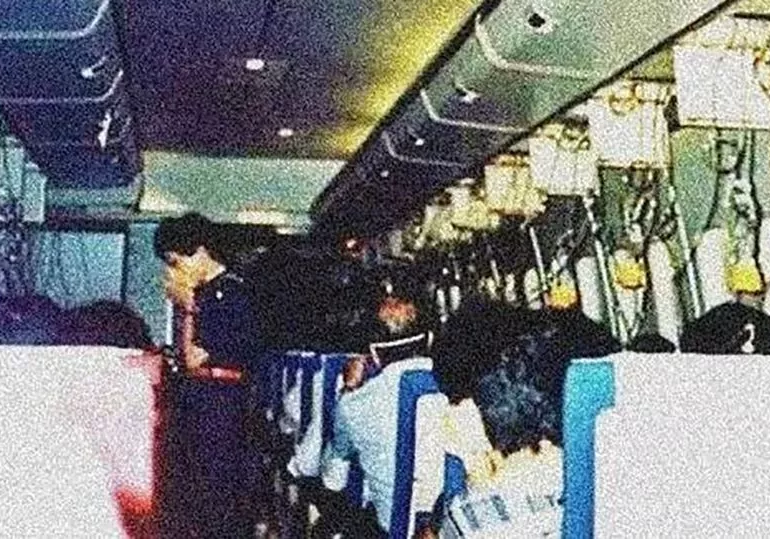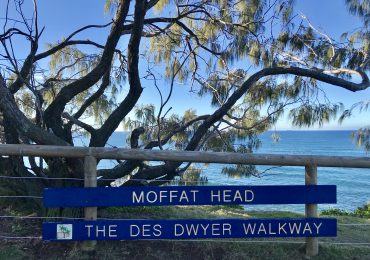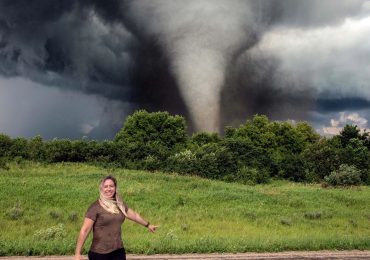THESE are the final images of the doomed Japan Air Lines flight before the world’s deadliest crash that killed 520.
Haunting photographs showed the last minutes before the plane smashed into a mountain – exactly 39 years ago today.
RedditThe last photo taken on board the fatal Japan Air Lines flight[/caption]
RedditThe plane was headed to Osaka after departing Tokyo[/caption]
WikipediaA photo taken by a witness on the ground appears to show flight 123 missing its tailfin[/caption]
To this day, the Japan Air Lines from Tokyo to Osaka on August 12, 1985, which only had four survivors, remains the world’s deadliest single-jet crash.
Onboard the Boeing 747 were 509 passengers and 15 crew members, who were seemingly unaware of the horror that was to follow.
A grainy photograph taken on board the fatal flight shows an air stewardess standing in the aisle holding an oxygen mask to her face.
Another photo taken by a witness on the ground appears to show flight 123 missing its tailfin.
It is thought that the flight began normally as the plane had already been flown four times that day, and no concerns had been reported.
However, a few minutes after takeoff, First Officer Yutaka Sasaki and Captain Masami Takahama noticed a tremor tear through the plane.
The jet decompressed rapidly, causing the ceiling near the rear bathrooms to collapse, damage to the fuselage, total destruction of the vertical stabiliser, and severing of all four hydraulic lines.
Moments after the tremor was detected, the air condensed into a fog, forcing the oxygen masks down.
A passenger incredibly captured a picture of these last minutes as the flight crew battled to keep the 747 in the air amid the mayhem and confusion that engulfed the cabin.
According to reports, Captain Takahama made a last-ditch effort to keep the aircraft aloft by using the engine thrust to ascend and fall.
GettyThe plane crashed into one of the ridges on Mount Osutaka[/caption]
Getty – ContributorMembers of the Japan Ground Self-Defense Force carry bodies by a helicopter at the ridge of Mount Osutaka on August 14, 1985[/caption]
Getty – ContributorMembers of the Japan Ground Self-Defense Force in a rescue operation at the crash site[/caption]
Getty – ContributorPolice officers dismantle the primary wing at the crash site at the ridge of Mount Osutaka[/caption]
The tragic Japan Air Lines flight was in a phugoid cycle, which occurs when an aeroplane descends thousands of feet before pointing up and ascending again.
For just under 30 minutes, the jet was in a vicious and disorienting cycle of falling and then rising.
Passengers shouted as they were thrown around the plane by the rapid spiralling, while the pilots fought to bring the jet to safety.
Takahama is believed to have yelled: “This is the end!”
The Boeing 747 then slammed into a ridge on Mount Osutaka, about 62 miles northwest of Tokyo.
Around 20 minutes after impact, US Air Force serviceman Michael Antonucci reported the crash site.
In the aftermath of the crash, the search and rescue efforts were delayed, and survivors were not found until several hours later.
This delay likely contributed to the high death toll, as some victims who survived the initial impact died before help could arrive.
Japanese officials delayed sending a rescue crew, assuming that no one had survived, and told Antonucci not to discuss the disaster.
The Japanese military only sent rescue teams in the following morning, a whole 12 hours after the crash had been reported.
Antonucci revealed a decade later: “Four people survived. Many more could have.
“At the time it occurred, I was ordered not to speak about it.”
One doctor involved in the rescue mission said: “If the discovery had come 10 hours earlier, we could have found more survivors.”
“Four people survived. Many more could have.
Michael Antonucci
Yumi Ochiai, a survivor, claimed to have heard other survivors wailing all through the night, until the intense cold finally got to them.
Antonucci added that had it “not been for efforts to avoid embarrassing Japanese authorities”, a team of US Marines could have searched the wreckage less than two hours after the crash.
The puzzle began to come together as more teams were dispatched to retrieve body and plane parts.
Two years later, after a comprehensive investigation, Japan’s Aircraft Accident Investigation Commission determined that the decompression was caused by a botched repair by Boeing workers.
The same aircraft had thudded heavily upon landing at Itami Airport in June 1978, causing extensive tail damage.
The impact also cracked open the pressure bulkhead, necessitating immediate repairs.
However, Boeing’s repair personnel utilised two spice plates parallel to the break in the bulkhead instead of one, rendering the repair job worthless.
According to Ron Schleede, a member of the US National Transportation Safety Board, the crew did everything they could to avoid the disaster, which was “inevitable”.
GettyIt is thought that many more survivors could have been saved[/caption]
The horror aftermath of the crashAFP
GettyIt was reported that the rescue mission was delayed by 12 hours[/caption]
World’s Worst Air Disasters
Tenerife Airport Disaster, 1977
On March 27, 1977, on the island of Tenerife two Boeing 747 jets collided on the runway in the deadliest accident in aviation history.
The accident occurred as a result of heady mix bombings, organisational issues and fog.
A bomb explosion at the airport on Gran Canaria caused many flights to be diverted Los Rodeos Airport on the popular holiday island.
Among two of the flights affected were KLM Flight 4805 and Pan Am Flight 1736, neither would leave the island.
Tragedy struck due to radio miscommunication causing the Dutch plane to rocket down the runway at take-off speed while the US aircraft was taxing in the opposite direction.
The resulting collision resulted in the death of 583 people.
Malaysian Airlines 370, 2014
The MH370 Boeing was seen for the last time on military radar at 2.14am, close to the south of Phuket Island in the Strait of Malacca.
Half an hour later, the airline lost contact with the plane. It had been due to land at around 6.30am.
On July 29, 2015 – more than a year after the plane’s disappearance – debris was found by volunteers cleaning a beach in St Andre, Reunion.
A week later investigators confirmed the debris did belong to MH370, but it did not help to locate the plane as it had drifted in the water.
Theories abound about what happened to the missing jet but the true cause of the crash may never be known.
Malaysian Airlines 17, 2014
Flight MH17 was as passenger flight from Amsterdam to Kuala Lumpur that was shot down over eastern Ukraine on July 17 2014.
All passengers and crew perished putting the death toll at 298 in the deadliest case of “airliner shootdown” in history, 80 children was on board when it went down.
It was hit by a Russian made Buk surface to air missile fired from Ukrainian separatist held land near Donetsk.
Air France Flight 447, 2009
On June 1 2009 Air France Flight 447 disappeared off the radar off the coast of Brazil.
The airline took six hours to acknowledge the loss of the plane and no trace was found for days.
All 216 passengers and 12 crew were never seen again after the Rio to Paris flight crashed out of the sky.
Investigations went on to prove that the crash was caused by the pilot flying to high and stalling the engines causing the plane to fall out of the sky and into the Atlantic ocean.
Uruguayan Flight 571, 1972
The chartered Air Force plane carrying 45 people, including a Uruguayan rugby team, crashed in the Andes in South America.
More than a quarter of the passengers lost their lives on impact and a number of others quickly succumbed to the cold of the mountains or injuries sustained in the crash.
Of the 27 who survived the initial impact and cold a further eight were killed in an avalanche a few days after the incident.
Eventually 16 people were rescued after spending more than two months in the freezing conditions of the mountains.
But those survivors had been forced to eat the corpses of their fellow passengers when faced with starvation.
JAT Yugoslav Airlines Flight 367, 1972
The McDonnell Douglas DC-9-32 model aircraft was blown up by a bomb placed on board by Croatian fascist militant group the Ustase as it made its way back to Yugoslavia from Sweden.
All but one of the 28 passengers and crew died on the plane but one stewardess made it into the record books.
Lockerbie Bombing, 1988
Pan Am Flight 103 was flying from Frankfurt to Detroit via London and New York on 21 December 1988.
While over the Scottish town of Lockerbie a bomb was detonated aboard the flight, killing all passengers and crew.
Eleven of the town’s residents on the ground were also killed by falling debris, bringing the death toll to 270.
American Airlines Flight 191, 1979
Moments after take-off the left engine of Flight 191 from Chicago to Los Angeles fell off.
The plane rolled over upside down and smashed into a field near O’Hare international airport.
A firefighter on the scene was quoted as saying that not a single complete body was found.









